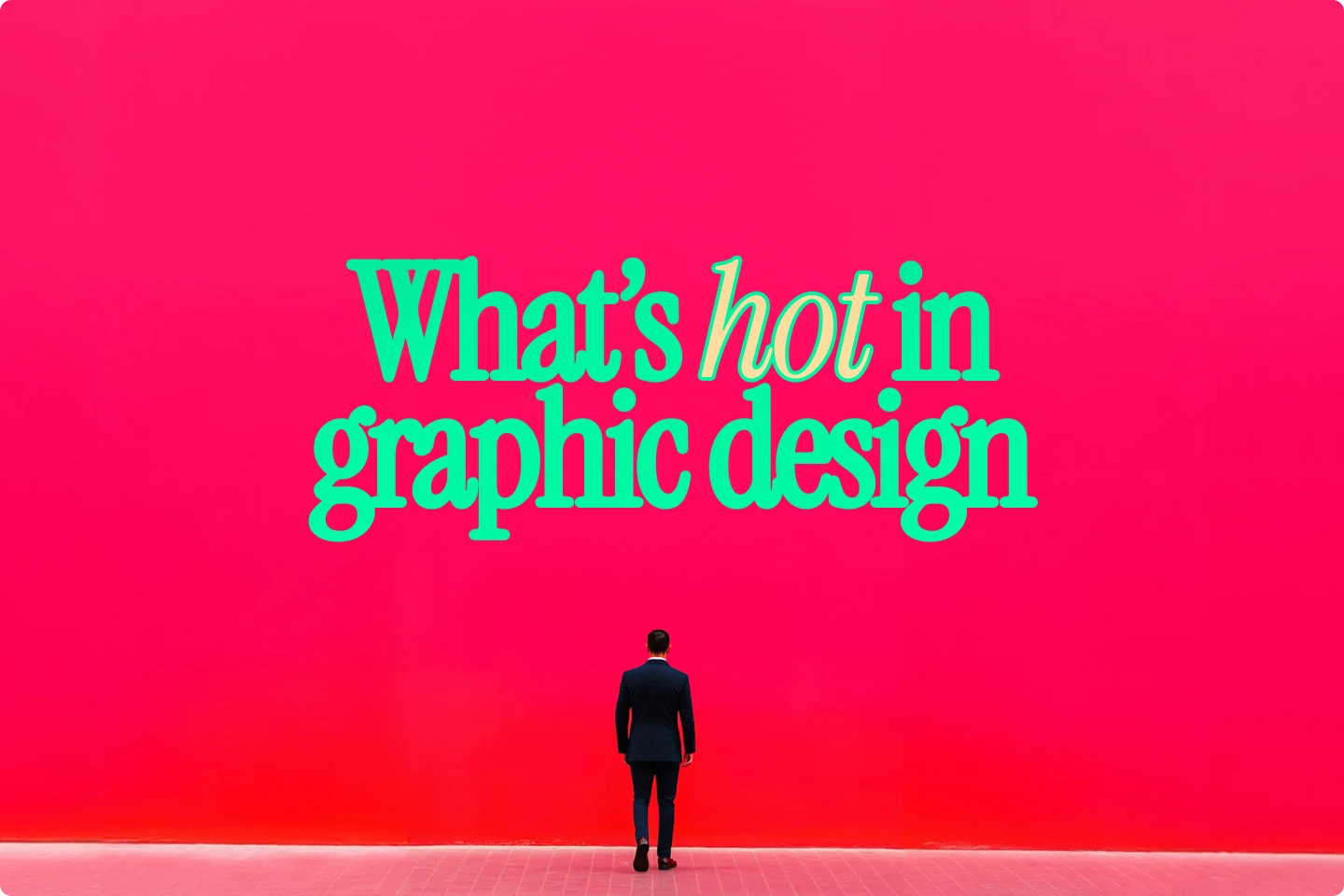Shaping the future with new web design trends in 2025


We went on a mission to find what kind of trends will be dominating web design in 2025. Here's what we found.
The digital playground is constantly evolving, and web design is right there, doing flips and cartwheels along with it. As we get closer to 2025, designers and web developers need to keep an eye on these modern web design trends or risk being left in the dust (dramatic, I know).
Why? Well, staying ahead means you can flex those design muscles, keep users happy, and make your digital presence feel more custom and engaging.
So, whether you’re a seasoned web designer, a developer knee-deep in code, or a business owner trying to keep your site relevant, this list is your new BFF. Let’s jump into what’s going to dominate the web in 2025.
The ever-changing role of web design
Web design is not just about aesthetics and clean design. It plays a crucial role in how a brand is perceived and how users interact with a website.
As technology evolves, so do user expectations.
Staying updated with web design trends is essential to meet these expectations and provide a seamless user experience. The future of UX and web design is about staying relevant in a rapidly changing digital landscape.
1. Parallax scrolling: suble motion and movement
Parallax scrolling continues to be a popular technique for creating dynamic, visually engaging websites. By moving background elements at a slower pace than the foreground, it adds a sense of depth and motion, enhancing the overall user experience. In 2025, expect more sites to use parallax effects strategically, ensuring they complement the content rather than distract from usability and performance.
2. Immersive experiences: VR and AR
Say goodbye to basic, static websites—2025 is all about immersion and taking things to the next level. Virtual Reality (VR) and Augmented Reality (AR) are kicking the door down, letting users explore 3D spaces, interact with virtual products, and basically play around in a digital playground.

This isn’t just for fun and games (although, let’s be real, it’s pretty fun). E-commerce sites especially can benefit by letting customers "try on" products before hitting that checkout button. And with VR and AR becoming more accessible, web developers are already getting their hands dirty integrating these into web design.
3. Minimalism and clean design
This style in web design is not a new trend, but it continues to dominate. This trend all about simplicity and functionality, with a focus on essential elements only.
Clean lines, ample white space, and a limited color palette are key features to minimalist designs. The aim is to reduce clutter and distractions, making the user's journey as straightforward as possible.
As we approach 2025, expect to see more websites embracing minimalism. This timeless design philosophy that puts user experience first, making it one of the most consistent top web design trends.
4. Dark mode and low light UX
Dark mode is becoming increasingly popular in web design.This design choice that inverts the usual light background and dark text to a dark background with light text.
This trend is not just about aesthetics. Dark mode can save battery life on OLED screens and reduce eye strain in low light conditions. Dark mode is another practical design choice that caters to user preferences and comfort.
As we move towards 2025, expect to see more websites offering a dark mode option since it is a trend aligns with the growing demand for personalized and user-friendly design.
5. AI and personalization
Artificial Intelligence (AI) is changing web design and and enabling more personalized and interactive user experiences.
AI can analyze user behavior and preferences to tailor content and design elements. It can suggest products, adjust layouts, and even interact with users through chatbots.
As we approach 2025, AI will become even more integral to web design.
6. 3D Elements and interactive animations
3D elements and interactive animations are becoming a staple in modern web design. They add depth and dynamism, making websites more engaging and immersive.
In 2025, we can expect to see more websites incorporating 3D illustrations, custom graphics, and animations.

These elements can show important information, help users find their way, or make the experience look great.
With the rise of VR and AR technologies, 3D design can also offer interactive experiences. Users can explore products, services, or information in a more tactile and engaging way.
7. Mobile-first and responsive design
The mobile-first approach is not a new trend, but it continues to be a crucial aspect of web design. With more people accessing the internet via mobile devices, websites must be designed to work seamlessly on smaller screens.
Responsive design ensures that a website's layout and elements adjust to the screen size. This provides a consistent user experience across all devices. In 2025, we can expect this trend to continue, with more emphasis on mobile performance and usability.
The rise of wearable technology also influences this trend. Designers will need to consider how their websites appear and function on smartwatches and other wearable devices.
8. Voice User Interfaces (VUI)
As voice search becomes more popular, the integration of Voice User Interfaces (VUI) in web design is expected to rise. VUI allows users to interact with websites through voice commands, enhancing accessibility and convenience.
In 2025, we can anticipate more websites incorporating VUI. This will be particularly beneficial for users with visual impairments or those who prefer hands-free navigation.
Designing for VUI requires a different approach. It involves understanding natural language processing and creating a better user experience. This trend is set to redefine how users interact with websites in the future.
9. Micro-interactions for user engagement
Micro-interactions are subtle design elements that provide feedback and guide users. They can be as simple as a button on a landing page changing color when clicked or a subtle animation when a task is completed.
In 2025, we can expect to see more of these micro-interactions in web design. They enhance the user experience by making the website feel more responsive and interactive.
Micro-interactions can also encourage user engagement.
For example, a 'like' button animation can make liking a post more fun. This can encourage users to interact more.
As web design evolves, these small details will play a significant role in user engagement.
10. Bold typography and creative text layouts
Typography is a powerful tool in web design. It can capture attention, evoke emotions, and even influence user behavior. In 2025, expect to see more bold typography and creative text layouts in web design.
Bold, large-scale typography can make a strong visual impact. It can be used to highlight important information or create a unique visual hierarchy.
Creative text layouts can make a website more interesting by boring designs and give a fresh, lively look.
In the future, designers will keep being creative. Typography will become more important in web design.
11. Sustainable and eco-friendly design
As awareness about environmental issues grows, so does the importance of sustainable and eco-friendly web design. In 2025, we can expect this trend to become even more prominent.
Sustainable web design involves practices that reduce the environmental impact of websites.

This means making images and code load faster, using eco-friendly hosting, and creating designs that last longer, whicj helps avoid regular redesigns.
Eco-friendly design is not just about the environment. Instead, this trend is also about creating a better user experience. Faster load times, for instance, not only reduce carbon emissions but also improve user satisfaction. As we move towards 2025, sustainable and eco-friendly design will become a key consideration for web designers.
12. Accessibility and inclusive design
Inclusive design is about creating websites that everyone can use, regardless of their abilities or disabilities. This trend is set to become even more important in 2025.
Web accessibility means making sure your website is usable by people with disabilities. This includes people with visual, auditory, motor, or cognitive impairments. While some may see this as a trend, it's also a legal requirement in many places.
Inclusive design goes beyond accessibility. As we move towards 2025, we can expect to see more focus on accessibility and inclusive design in the web design industry.
13. Data visualization and complex information display
Data visualization is a powerful tool in web design. It allows complex information to be presented in a way that's easy to understand. As we move towards 2025, this trend is set to continue.
With the rise of more advanced data, there's more information than ever to be communicated. Data visualization can help make sense of this information. It can turn complex data into simple, visual representations that are easy to understand.
As we approach 2025, we can expect to see more innovative uses of data visualization in web design. This will help businesses communicate complex information in a clear and engaging way.
14. Anti-design and the rise of bold authenticity
Brutalism in web design, characterized by its raw, unpolished aesthetic, is gaining traction, especially among younger audiences. Embracing "anti-design" principles, brutalist websites reject traditional layouts, minimalism, and smooth visuals in favor of bold, clashing colors, unrefined typography, and a straightforward, almost aggressive honesty.
This trend speaks to a desire for authenticity over polish, offering an unfiltered, memorable user experience that defies conventional design rules and resonates with those looking for something different, edgy, and real.
Preparing for the Future of Web Design
With the new web design trends 2025, it's clear that web design will continue to evolve. From immersive experiences to data visualization, the trends we've discussed will shape the future of web design ideas.
Staying ahead of these trends is crucial for businesses and designers alike. By understanding and implementing these emerging trends, you can create websites that are not only visually appealing but also effective and user-friendly. The future of web design is exciting, and we can't wait to see what 2025 brings.
6 stunning illustration styles and trends for 2025


.webp)



